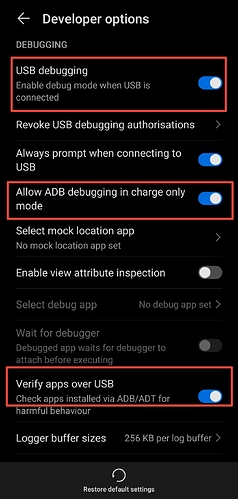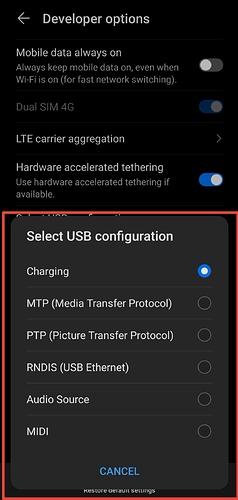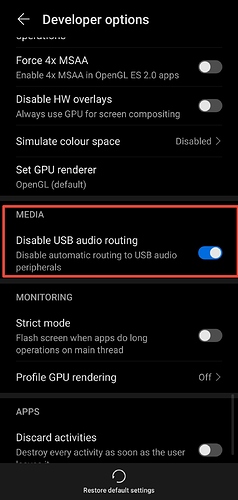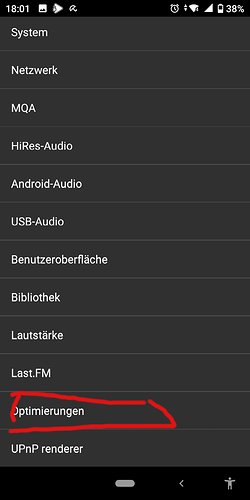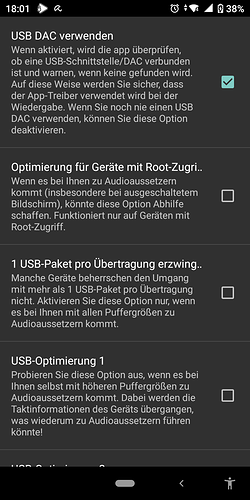I don’t personally like MQA, it’s a clear attempt to push yet another bad unnecessary standard with a license fee on the industry.
If you want to use it, the IFI portable DAC’s support it.
Personally I use Qobuz, and I’ve previously used Amazon HD, but it’s not available everywhere.
Can anyone answer my question of which would you get between FiiO BTR5 or the Xduoo XD-05 Basic? I have both in my cart now. Both have gotten great reviews from Zeos. I am looking for portability and sound quality. My mains are SHP9500s and HD599s…Sorry if that hurts to read but I am only just beginning. I will only be using the DAC/AMP with my phone which is a Note 10 Plus.
The XD05 is about the same size as your phone, but significantly thicker. For portability I’d go with the BTR5, the battery is less than a quarter but it charges in 1/10th of the time
I’ve been using the FiiO BTR5 for about 6 months for my office headphones (DT177x). It’s really compact and lightweight. I’ve liked it so far for portability and sound quality. I keep it clipped to my shirt collar and use it to take calls between tracks.
keep in mind that if you’re streaming over Bluetooth, you may not notice a significant difference from “high” vs “master” quality on Tidal. Master only makes a good difference if you’re running them through wires.
You can purchase the “USB Audio Player Pro (UAPP)” app on playstore (8$), and then make another in-app purchase for MQA decoding (4$). then plug in BTR5 to your phone through USB cable. The mentioned app has built in EQ also which you can use while playing Tidal. i.e. you sign into Tidal through the UAPP app, and use it to stream tidal. Although the user interface of UAPP is kinda outdated, it has the best sound quality period.
Nice workaround, thank you! However, if the BTR5 can’t decode the master tracks, then I assume there would there be no difference between them and the “high” quality, regardless of whether I’m using usb or Bluetooth, no? I didn’t realize that it was only capable of 48k from tidal when I bought it. Have you gotten it to decode master tracks? I actually bought a hip DAC because it’s supposed to “do mqa” but when I plug that into my phone and play master tracks, it indicates that it’s playing back at “44/48/88/96khz”. It appears I can’t win.
I had them with BTR5. High gain + balanced — never raised volume over 40. It was alright for me, but ATH-R70X would benefit from higher power amp for sure.
people have a bit of polarizing opinions on MQA format. imo the first unfold is enough to notice a difference. first unfold will output either 88k or 96k.
Another important point is that, Android OS only outputs 48k through USB out. This is its limitation on how the USB audio is handled by the OS (android mixer up-samples everything to 48k).
The UAPP (music player) does not use android drivers and it has its own drivers which communicate with the USB DAC exclusively, therefore i highly recommend it especially because you can use Tidal through UAPP.
- Try purchasing UAPP and enable “bit- perfect mode” and connect to your Hip-dac using USB. see if the hipdac unfolds it fully.
- i do not have experience using MQA decoding DAC’s, so if just using the “bit-perfect mode” does not unfold MQA, you may have to make the in-app purchase in UAPP for MQA decoding (note: this will do the first unfold; whereas your hip-dac could do the full unfold)
Omg. So No matter what I was using I would only get 48k because of Android - that’s unbelievable. I don’t recall the instructions for either piece of hardware mentioning this. I also don’t remember hearing anyone mention this in the 400 videos I’ve watched about DACs for your phone. Thank you for the additional education. Z should do a video about stuff like this to educate the masses. This seems like a pretty important detail and I’m sure I’m not the only one who doesn’t know. I would guess most people plug everything in and just assume their getting a master quality track because that’s what the app says it’s playing. My sincere thanks again.
I can get 192k out of my phone via USB. The issue maybe your phone.
Any thoughts on how the BTR5 pairs with the Thieaudio Legacy 4? I am worried that the combination might be too bright. Or is this something that can be taken care of using the EQ?
I don’t know anything about the Thieaudio Legacy 4, but I never found the BTR5 to be bright with the headphones I used it with. I would actually call it more relaxed–It certainly isn’t as bright/sharp/grainy as the ES100.
I have this combo and I would say in general you should be fine. The BTR5 is, to my ears, a little more treble forward than my other gear. But I don’t believe this is enough for turning anything into a razor machine. This device is very convenient and can drive a lot of stuff with clean power, so for anyone wanting a bluetooth device I really recommend it.
If you already have the L4 and is comfortable with the treble on it, you should be fine. The increase isn’t significant, and I think the improvement in detail from just your phone is worth it. If you havi it and you find it fatiguing at times, than maybe look elsewhere.
If you don’t have the L4 and is thinking about pairing, than focus a little more on the IEM first. I’ve been listening to some music on the L4 and it can be fatiguing to me, although not too much. Maybe it’s better to access how sensitive you are to this kind of thing, see if you had other hibrid IEMs, etc.
(Edit: forgot some thoughts about the combo, my bad).
Thanks for your feedback! I already own the L4, and I agree that it can be fatiguing some times, but only with a few songs. In general I don’t have any problems with it and I am happy with the sound. In hindsight, I should have chosen the Fiio FH3, which seems to be closer to my personal tastes.
I decided to order the BTR5 and a balanced cable to use with the balanced output. I think I will not be disappointed, but I can always use the EQ if I have to.
Nice! The BTR5 is a great portable solution, if you don’t want to go the bulky route. The balanced out opens up the L4 a little bit. And even if you find the combo a tad bright, you can always try with other IEMs. I’m very pleased by it with the Tin T2.
Hope to hear your impressions of it. o/
Ok I have an update. I received the BTR5 today and I am not gonna lie, the sound quality of the balanced output is really good, especially on Tidal master tracks. Is it a worthwhile upgrade from the Apple dongle? Hmm, it depends on the use case. If you care about Bluetooth, or want to drive more demanding headphones, yes, otherwise I think the Apple dongle is enough.
The unbalanced output of BTR5 however is pretty bad, probably worse than the Apple dongle.
Not a big fan of the Tidal Maters, so can’t comment on that. I will say, however, the difference was not night and day for me in the balanced vs unbalanced. For the most part, the difference sounded to me similar to changing from an integrated out (phone/mobo/laptop) to a cheap amp: more power to drive gives the IEM a little more control and an impression of a better stage. Now granted, I’ve never heard the apple dongle, but maybe it’s just my IEMs or my experience was simply different.
Anyway, happy to hear you like your purchase. I take it you do not have problems with the treble?
Thanks! I didn’t a notice a big difference compared to the dongle, so it still is occasionally fatiguing, but I think I can live with it.
Greetings, folks. Please, excuse me for this immense wall of text, but I’m pretty much desperate at this point. May I ask about the correct way to connect BTR5 to Android smartphone (Huawei P30 specifically) in the USB-dac mode? I use Neutron MP with all required permissions given but I just can’t get what are the optimal settings to choose in the developers settings. I get sound coming through the BTR5 in any case, but it’s different with all possible combinations of the settings. I’ve been experimenting for almost four months now and the frustration is becoming unbearable. In some cases what I identify as the effects of oversampling done by the Android are apparent (in spite of both the exclusive access to the DAC and direct access to the usb DAC in the Hardware Settings permissions given to Neutron), but in other cases there are still differences that are way less pronounced although still noticeable. The problem is - I can’t figure out what is the optimal option, 'cause I practically have no reference. Yes, I could have just settled on one configuration that sounds the best to me, but I just can’t settle on any. They all have their own pros and cons (more “body” and thus a bit more natural and life-like sound with lesser separation and resolution /vs/ more spacious sound with greater instrument separation but with less “body”, more “ethereal” one could have said). Even oversampling sounds better in some aspects in spite of it actually being a somewhat degraded signal. If I did know which one is optimal, at least in theory, I could then settle on it and in time become accustomed to its subjective cons.
If you believe that’s all bullshit and nothing but placebo, please, just ignore that part. At least in my case the software configuration has an impact on the actual sound. I would be very grateful if somebody just pointed out to me the correct configuration.
The relevant options I’m talking about are shown on the screenshots attached.
There’s also two more issues I have but I’m not sure if anybody can help me with these because they might be completely hardware/software specific to my Huawei P30.
-
A short time after I start playback via Neutron/UAPP through the usb-connected BTR5, if I interact with the UI outside of those apps there are dropouts (not pauses, just moments of silence after which the music hits my ears abruptly which is not just annoying but painful even with moderate volume) in the playback whenever I tap on any active element of the UI.
-
With USB Audio Routing disabled the OS doesn’t recognize that there’s an audio device connected and stays in the Speaker Mode, which results in Dolby Atmos being active and impossible to turn off. Funny enough, the music played in the dedicated apps through the BTR5 still goes through the Dolby Atmos’s processing somehow. Im at a complete loss as to how is it possible and why is it happening. I’ve managed to find a workaround, although I’m not quite sure it’s indeed working - I do disable USB Audio Routing only after the external DAC has been connected (with USB Audio Routing still active ) and the player app automatically launched. This way the Dolby Atmos is shown to remain disabled/inactive in the system settings and in the notification bar. Again, I’m afraid I can’t be sure if it’s working as intended.
I only use UAPP Neutron I don’t know.
First you should make sure that the battery optimization of the music app is switched off.
However, Huawei is known for often closing apps that are running in the background.
With UAPP there are various options for troubleshooting in the settings.
You should also try the bit perfect mode of the UAPP. This should send the data directly to the DAC without being changed by Android. However, the equalizer and crossfeed no longer work.
With my smartphone it is the case that the settings of the developer options are reset as soon as I close the settings.
